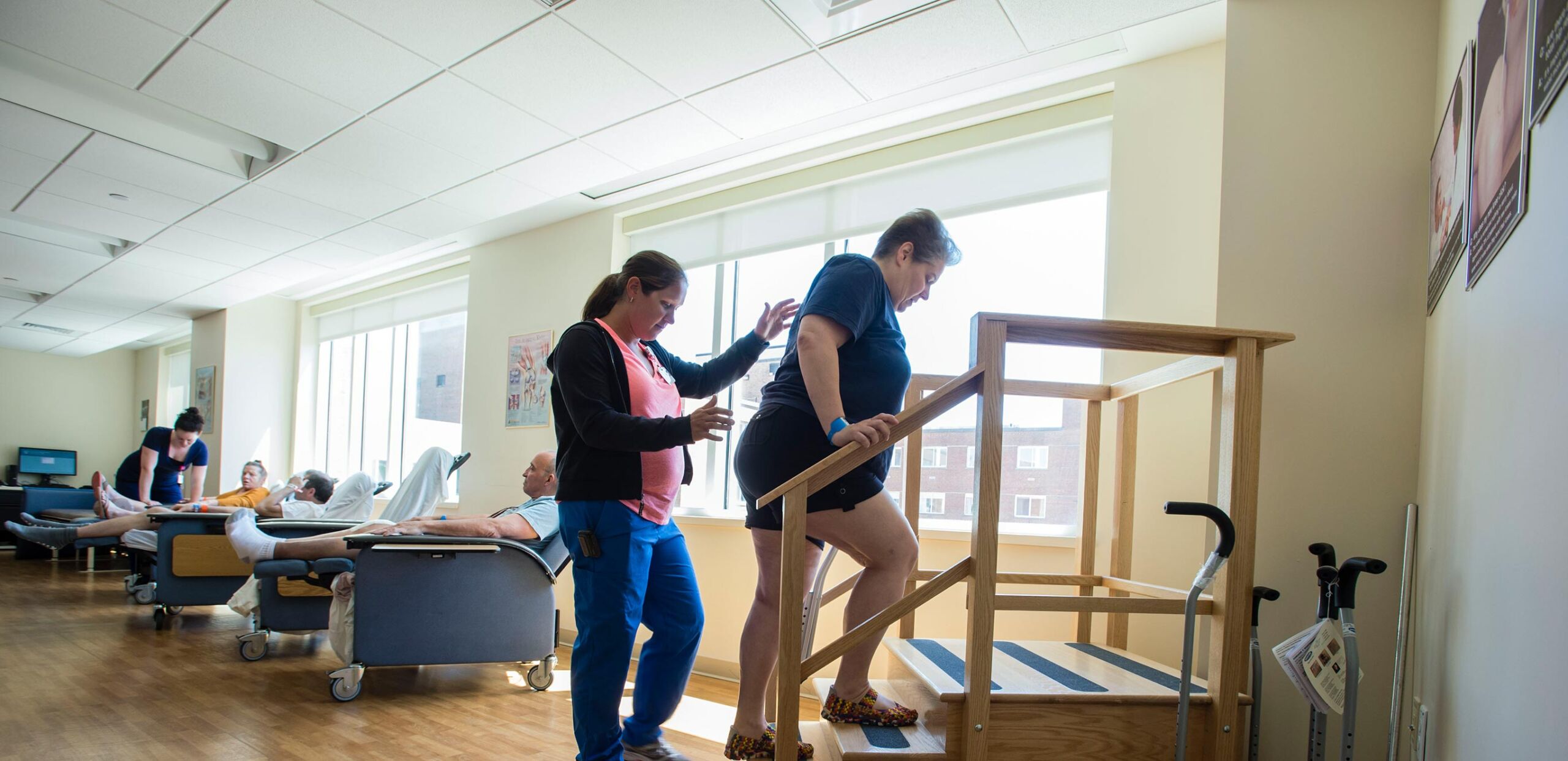Joint Replacement
Successful joint replacement surgery requires a team approach. Our orthopedic practice has been working for over 20 years to develop a thorough system to enhance your experience and assure the best results possible for each of our patients.
Procedures Performed
Joint replacement surgeries offered at Cooley Dickinson Hospital include:
- Total knee replacement, also known as total knee arthroplasty, where the surfaces of all three bones of the knee are replaced by prosthetic implants.
- Partial knee replacement, or partial knee arthroplasty, where mating surfaces of one part of the knee are replaced by prosthetic implants.
- Hip replacement. In the case of total hip replacement (hip arthroplasty), the whole head of the femur (thigh bone) along with the hip socket is replaced by prosthetics.
- Shoulder replacement, both traditional shoulder replacement and reverse shoulder replacement. The damaged parts of the shoulder joint are replaced by prosthetic components. In a total shoulder replacement (shoulder arthroplasty), both the head of the humerus (long arm bone) and the shoulder socket are replaced. In a partial shoulder replacement (shoulder hemiarthroplasty), only the head of the humerus is replaced by prosthetic implants.
- Revision joint replacement surgeries to remove failed implants and replace them with new, revision prosthetics.
Hip Replacement Surgery
If hip pain due to arthritis affects your quality of life to the point that you struggle to perform daily activities like walking, bending, sitting, or laying down without serious pain, and conservative treatments like over the counter pain medicine have not improved your symptoms, it may be time to consider hip replacement surgery.
Before surgery, your surgeon will perform a physical exam and imaging tests on your hip to check the condition of your joint. If surgery is recommended, your surgeon will explain the procedure and answer any questions you have. It typically takes at least 3 months for you to be fully healed, but depending on the surgery performed and your overall health, you may feel much better around 6 weeks after surgery.
In addition to regaining their range of motion and quality of life, most patients experienced reduced pain or no pain at all following hip replacement surgery. Your prosthetic hip is designed to last for 15-20 years, but it’s important to limit high-impact activities like running, jumping, or contact sports to help the prosthetic implants last longer.
Knee Replacement Surgery
Knee arthroplasty may be recommended for patients who have damage or deformity in their knee which causes:
- significant pain that limits everyday activities like walking, getting up, or sitting down
- noticeable knee pain that occurs even while resting
- chronic knee inflammation that doesn’t go away with conservative treatments, and/or
- knee pain that does not respond to conservative treatments like rest or medication.
Depending on your level of pain and the location of the damaged parts of your knee, your surgeon will perform either a total knee replacement or a partial knee replacement. Most patients will receive a total knee replacement.
In addition to regaining their knee function and range of motion, most patients experienced reduced pain or no pain at all after surgery. Your prosthetic knee components are designed to last for 15-20 years. Limiting high-impact activities like running, jumping, or contact sports, in addition to movements like kneeling and crawling, will help the prosthetic implants last for their intended lifetime.
Shoulder Replacement Surgery
Shoulder arthroplasty can help patients with pain or discomfort caused by damage to your rotator cuff or your shoulder joint. Based on your medical history, medical conditions, and the type of damage to the joint, your surgeon may recommend one of the following three procedures:
- Total shoulder replacement
- Partial shoulder replacement
- Reverse shoulder replacement
Your prosthetic shoulder components are designed to last for 15-20 years. In addition to regaining their range of motion, most patients experienced reduced shoulder pain or no pain at all following shoulder replacement surgery. Limiting forceful or high-impact movements can help the prosthetic implants last longer.
Same Day Surgery
In some cases, discharge can safely occur on the same day as surgery. If you are in good general health and have a home environment that can support your recovery, you may choose to go home a few hours after your surgery. Your surgeon will help you decide if you would be a good candidate for same day surgery.
Recovery
In the first several weeks after surgery, you will have swelling and discomfort in your joint. Your surgeon will explain how to manage the pain, which may include pain medication.
After your procedure, it’s important to follow your surgeon’s instructions on how to recover and safely begin moving again. This will increase the likelihood of your pain going away and you being able to return to everyday activities.
For a few months after your surgery, you’ll work with a physical therapist to restore movement, function, and strength in your joint. Your surgeon may also ask you to perform exercises at home after your surgery in order to maintain your joint’s natural range of motion.
Most patients are able to resume their normal daily activities 2-3 months after their surgery. For some surgeries, you may need 1 year to achieve full recovery.
Call 413-586-8200 to take the first step!
Joint Replacement Surgeons
Total Hip and Knee Replacement Surgery
Revision Total Hip and Knee Replacement Surgery
Total Shoulder Replacement Surgery
Reverse Total Replacement Shoulder Surgery
Revision Shoulder Replacement Surgery
Total Hip and Knee Replacement Surgery
Partial Knee Replacement Surgery
Total Ankle Replacement Surgery
Total Knee Replacement Surgery






